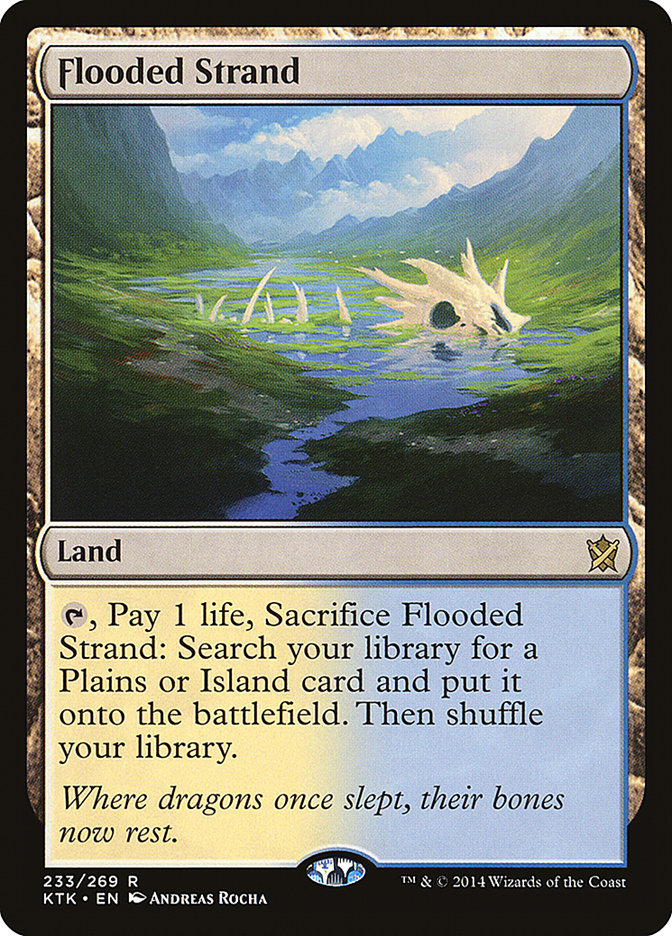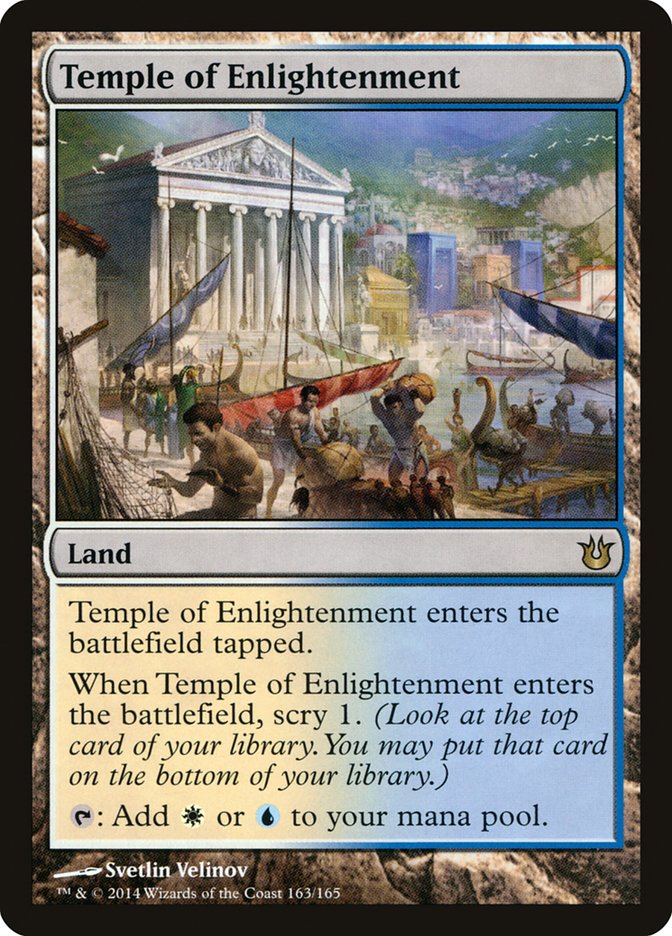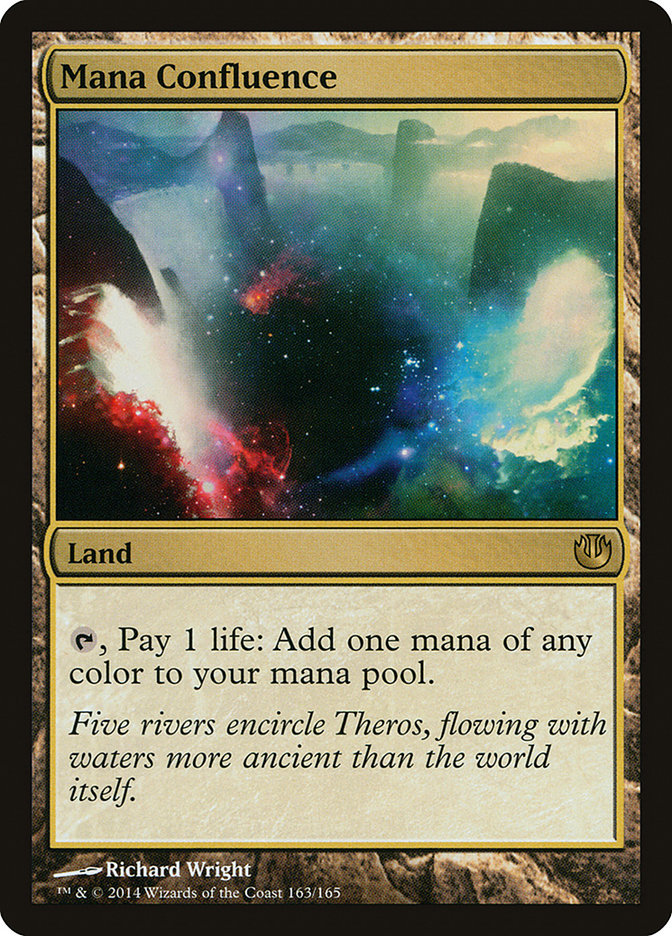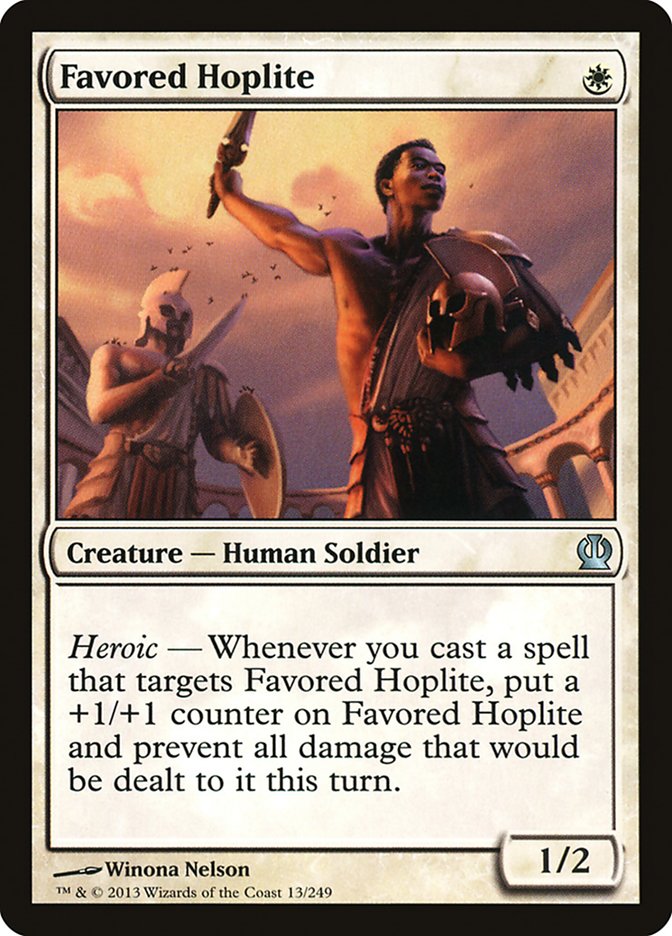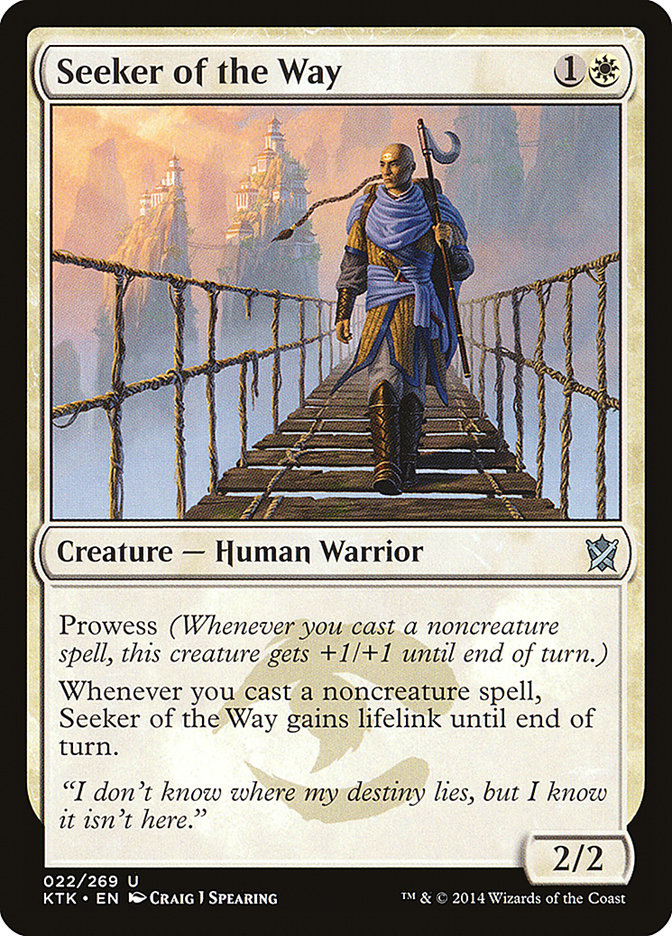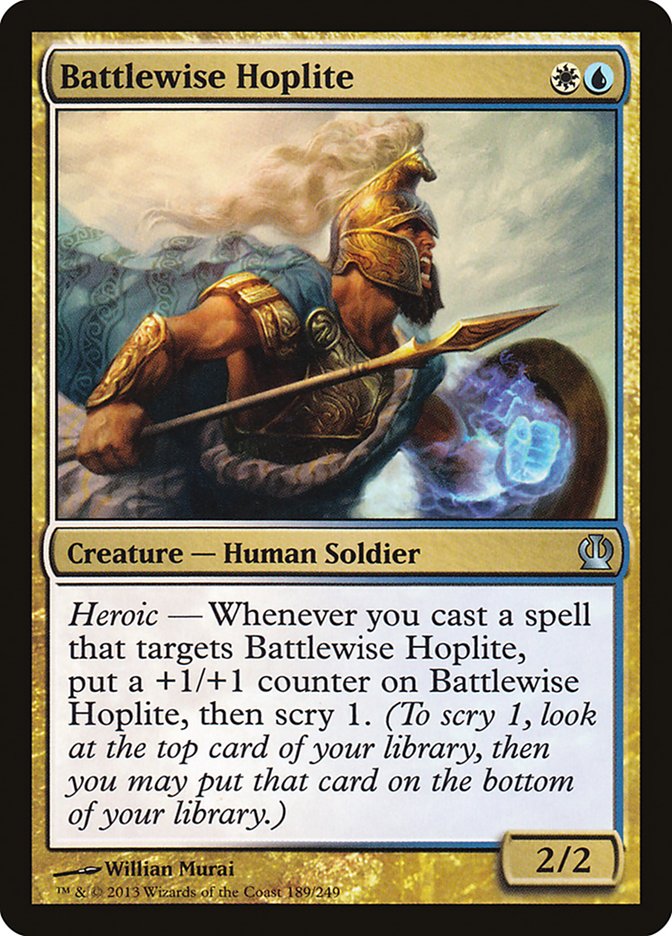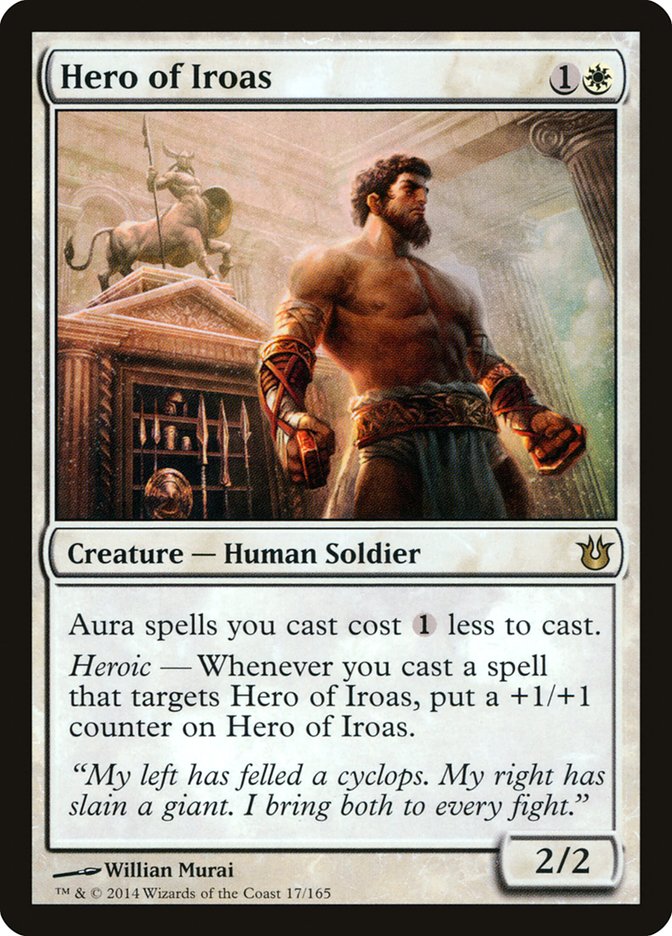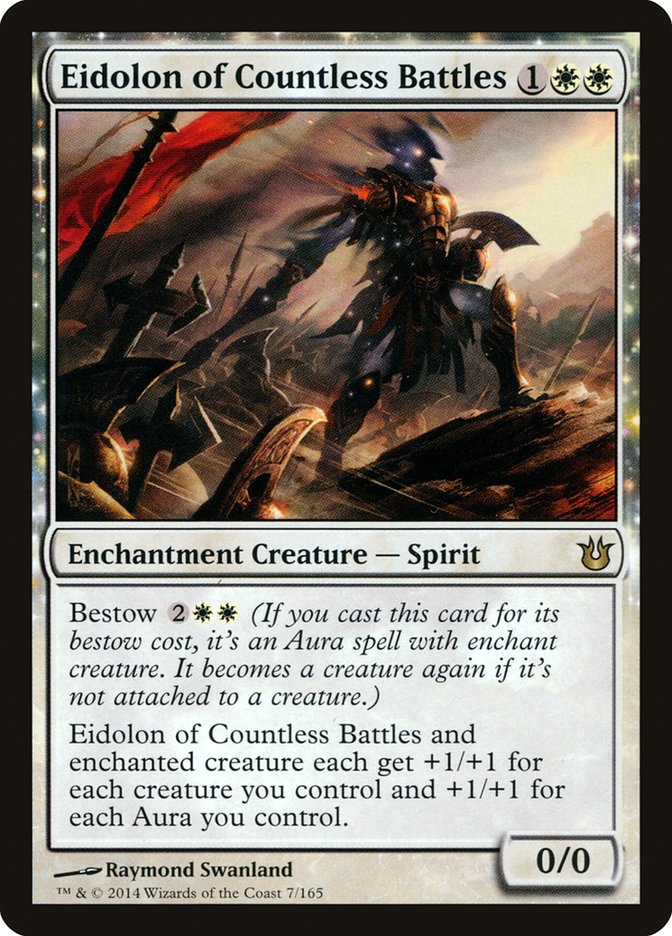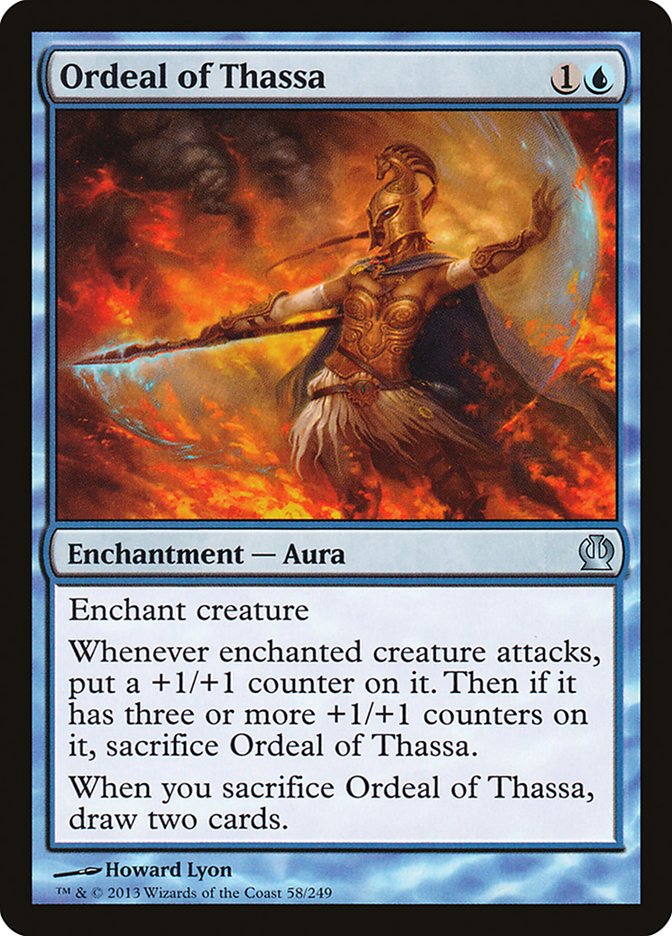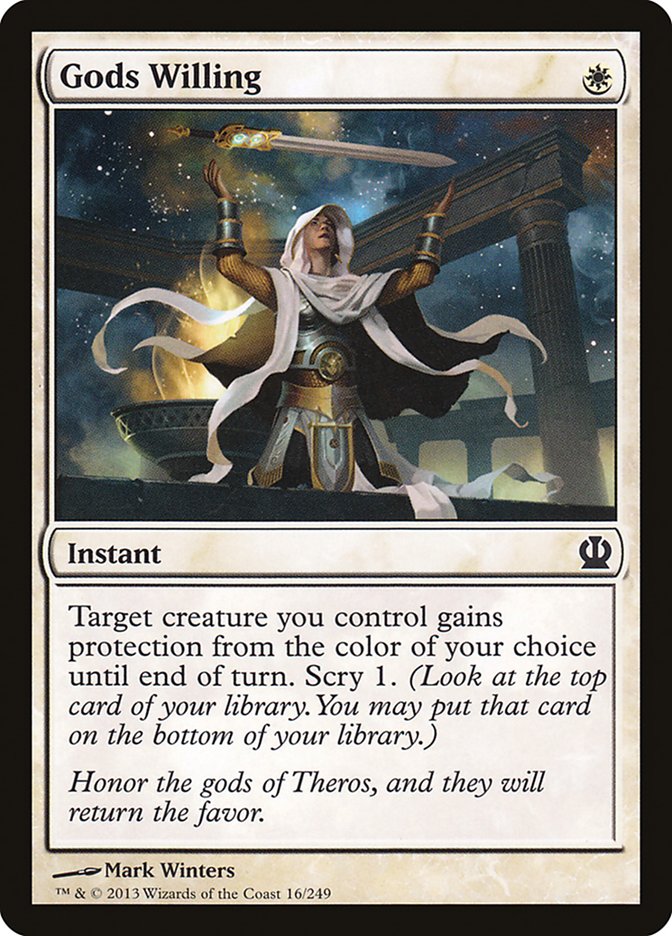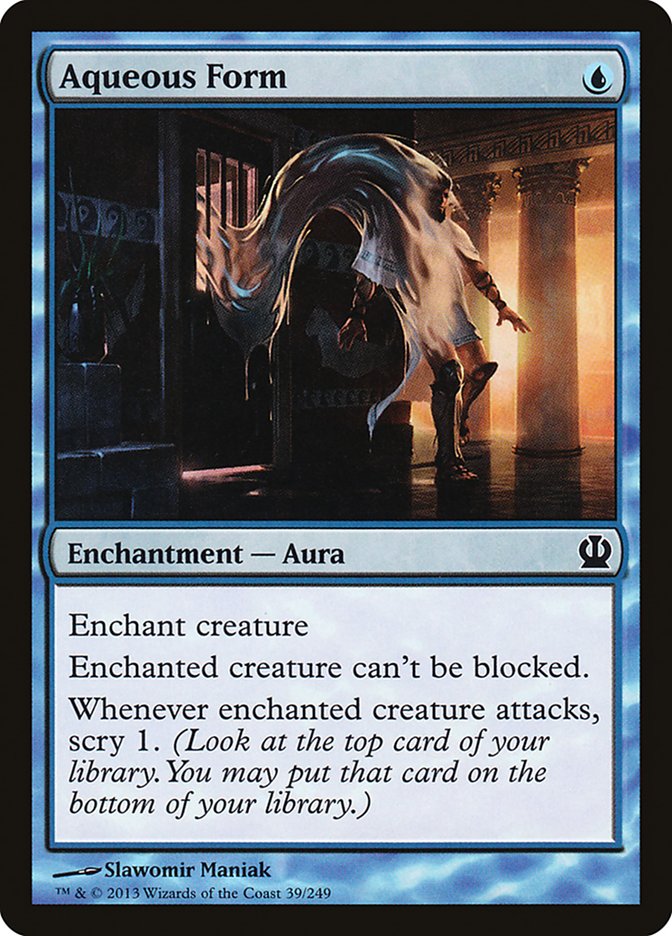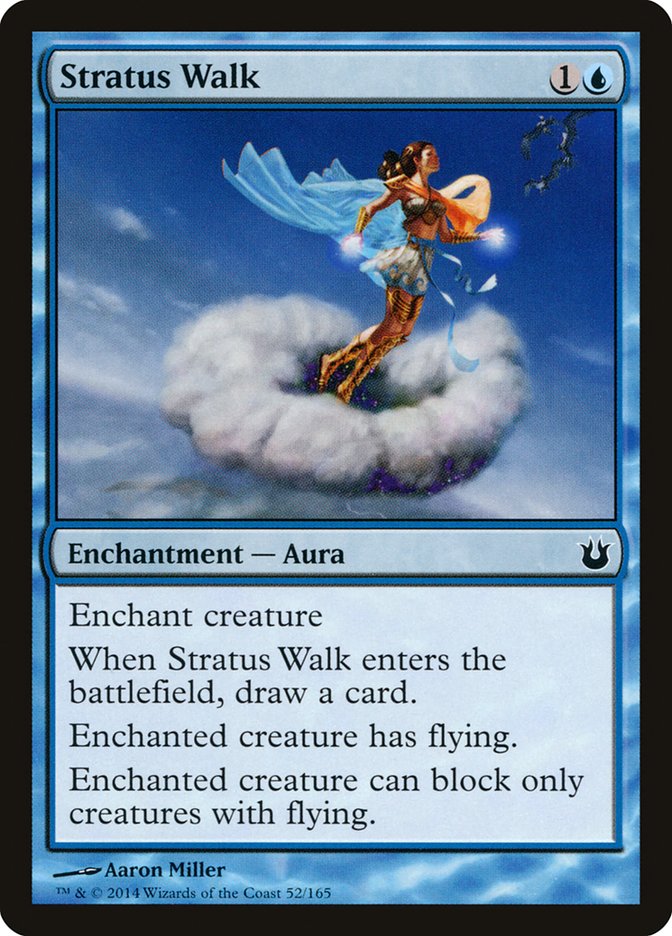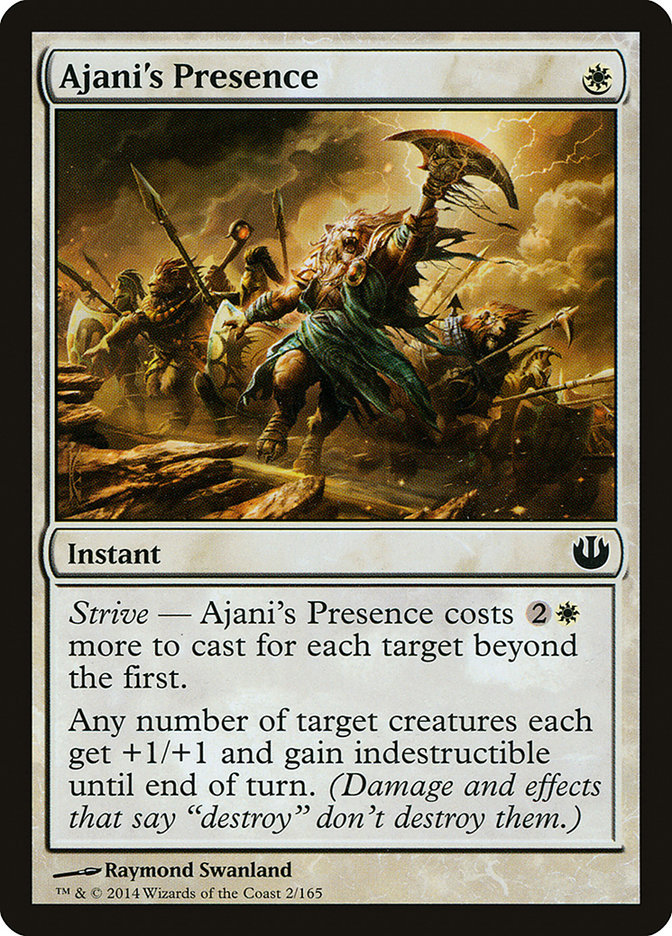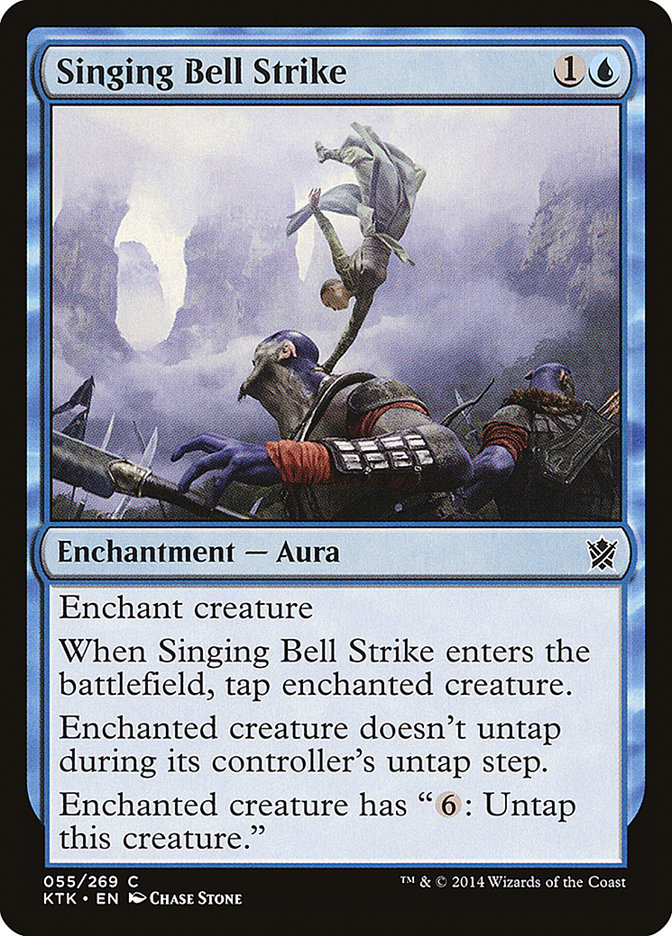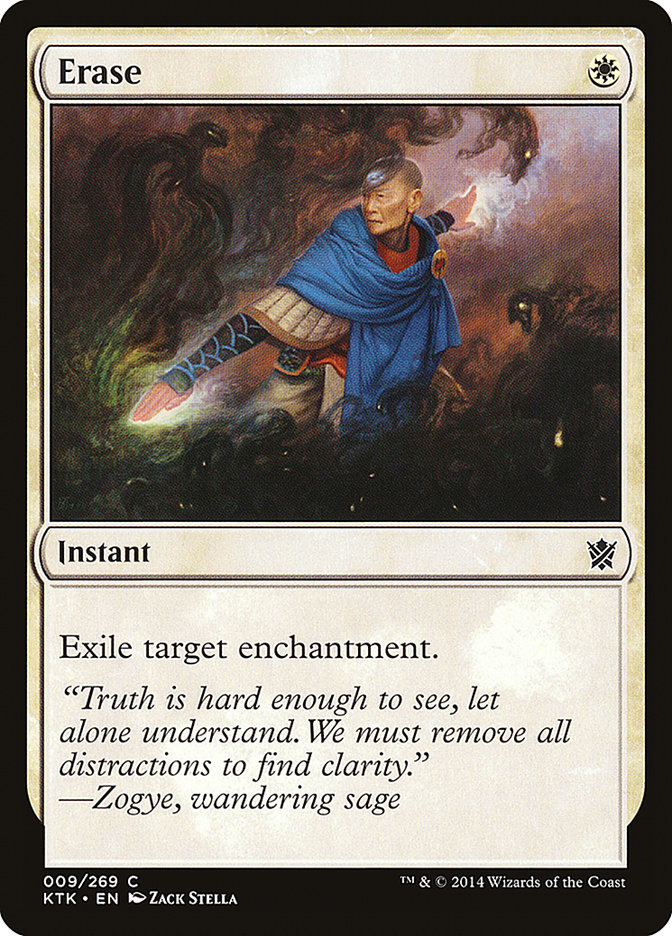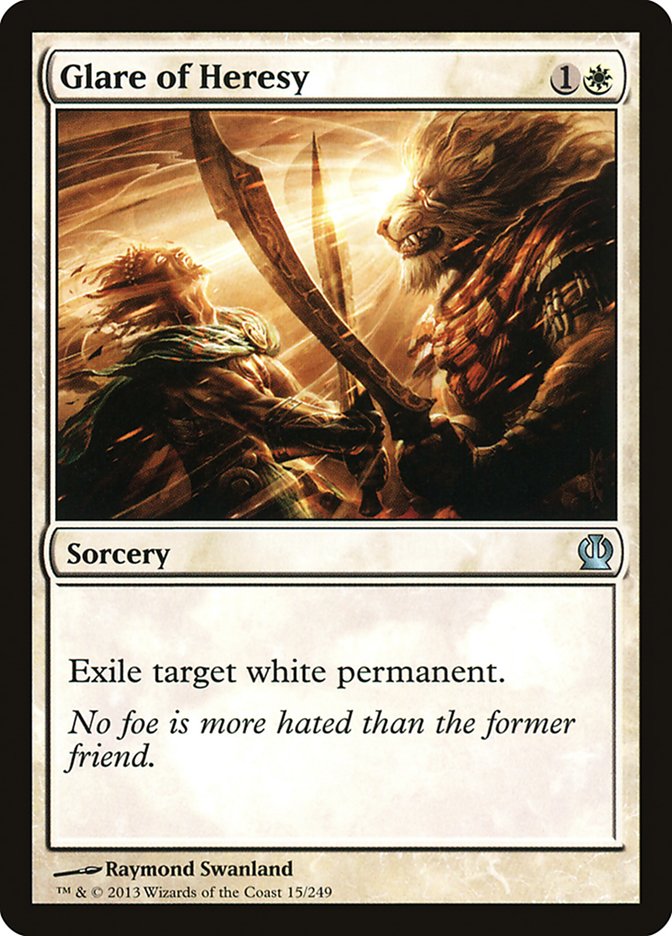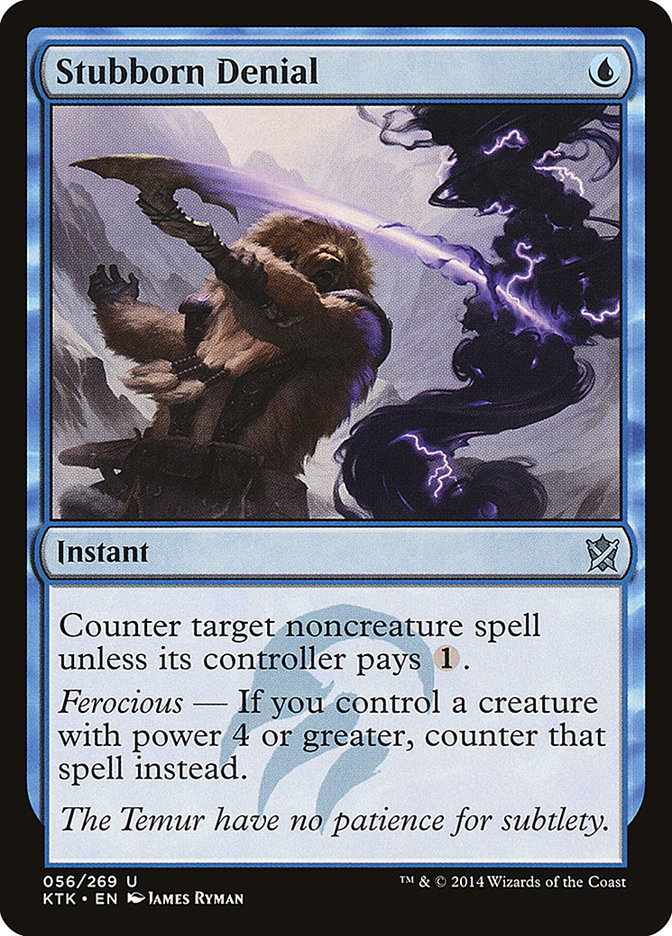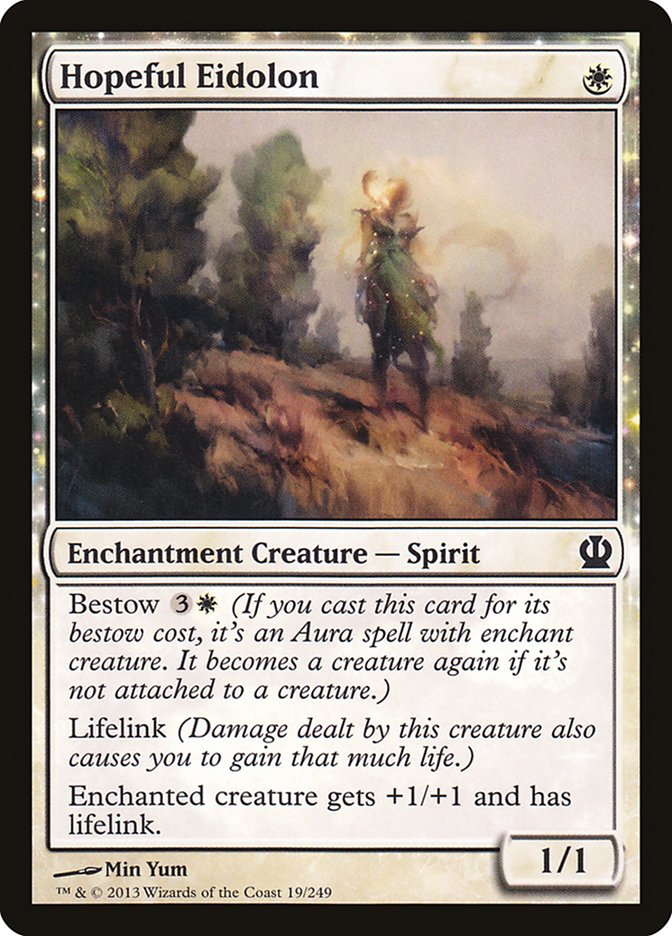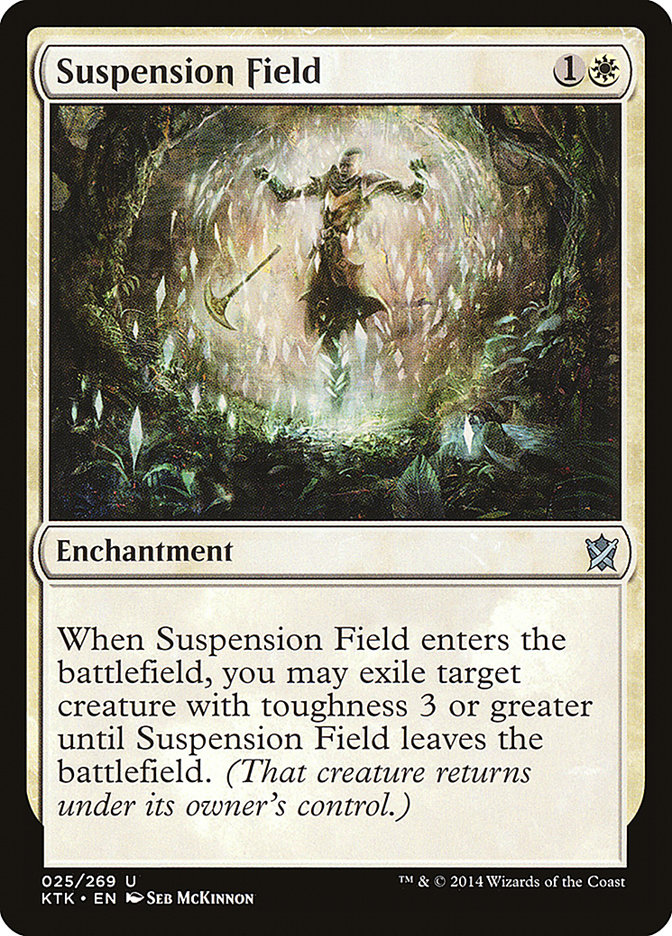This new Standard format is still fresh and there’s still a ton to be explored. However, the more things change, the more they stay they stay the same.
Rabble Red seems to be the only aggressive deck to transition through rotation, putting a large bullseye on it. No longer are people forgoing their Drown
in Sorrows and Anger of the Gods in hopes that Mono-Red will be hated out by others.
The aggro world needs a new hero.
The logical first step iss to gain inspiration from the Theros Block Constructed decks from Pro Tour Journey into Nyx and go from there. No doubt much of
the Abzan Midrange that we’re seeing today got its base from Patrick Chapin’s Pro Tour Journey Into Nyx winning list:
Creatures (18)
- 2 Polukranos, World Eater
- 4 Sylvan Caryatid
- 4 Fleecemane Lion
- 4 Brimaz, King of Oreskos
- 4 Courser of Kruphix
Planeswalkers (4)
Lands (25)
Spells (13)

Stanislav Cifka made it to the Top 8 with R/W Heroic, a low land count, and high synergy similar to the style that I like and that I used to win the Season
Two Invitational in Columbus earlier this year.
Creatures (20)
Lands (8)
Spells (32)

What I like the most about this version are the Dragon Mantles and how proactive it is. Instead of creating one large threat, Cifka creatures a swarm of
creatures that become difficult to block correctly along with Coordinated Assault. The enabler spells tend to target multiple creatures giving multiple
triggers of heroic. Phalanx Leader is great at pumping your team of token creatures that Launch the Fleet or Akroan Crusader created.
The mana looks rough, as Phalanx Leader and Dragon Mantle are at odds, as are the red one drops and Phalanx Leader. It leans heavily on Mana Confluence,
which can be extremely painful when drawn in multiples. Certainly M15’s Battlefield Forge would smooth out some of those concerns.
What I don’t like is how “all-in” the R/W version is. The synergies are high, but the potential to run out of gas is high without card drawing from Ordeal
of Thassa and not having as much scry.
Jared Boettcher took U/W Heroic to ninth place at Pro Tour Journey into Nyx, locking himself into Rookie of the Year. While not quite as fast, his version
packs a bit more endgame when compared to Cifka’s:
Creatures (20)
- 4 Battlewise Hoplite
- 4 Favored Hoplite
- 1 Hopeful Eidolon
- 4 Hero of Iroas
- 3 Brimaz, King of Oreskos
- 4 Eidolon of Countless Battles
Lands (7)
Spells (33)
- 10 Plains
- 4 Island
- 4 Gods Willing
- 3 Ordeal of Heliod
- 4 Ordeal of Thassa
- 4 Aqueous Form
- 2 Stratus Walk
- 2 Ajani's Presence
Sideboard

Many of the other competitors running U/W Heroic at Pro Tour Journey Into Nyx opted for Fabled Hero, more auras, and no copies of Eidolon of Countless
Battles. Certainly Jared’s deck lacks a bit of the explosion that the others had but more than makes up for it in longevity. Brimaz, King of Oreskos shows
up as a generic good creature that doesn’t need to be targeted to be a threat.
It’s one thing to have the unbeatable nut draw that heroic strategies can provide, but when that doesn’t pan out and they deal with your first or second
wave, you want to still have game. Jared showed up with the right numbers to fend off Mono-Red and other heroic decks with a touch of lifegain in Ordeal of
Heliod and Hopeful Eidolon while not being too vulnerable to decks that want to pick apart synergies with removal spells and Thoughtseize.
I’ve been testing with the following deck, and I like how some new additions from Khans of Tarkir further the archetype. The biggest concern from the
Heroic decks at the Block Pro Tour was how bad the manabases were. Now we have access to either M15’s painlands or the fetchlands from Khans of Tarkir.
I’ve opted for U/W Heroic and Flooded Strand to smooth out the mana issues the archetype once had while adding Defiant Strike and Seeker of the Way to have
a more consistently performing deck.
Creatures (20)
- 4 Battlewise Hoplite
- 4 Favored Hoplite
- 4 Hero of Iroas
- 4 Eidolon of Countless Battles
- 4 Seeker of the Way
Lands (11)
Spells (29)
- 7 Plains
- 2 Island
- 4 Gods Willing
- 4 Ordeal of Thassa
- 4 Aqueous Form
- 2 Stratus Walk
- 2 Ajani's Presence
- 4 Defiant Strike
Sideboard

Defiant Strike is exactly what the deck was looking for all along–something that furthers the development of your heroic creature with very little cost or
commitment. Seeker of the Way has been making its way into Abzan and Jeskai decks as both an efficient creature and a way to fight through the Rabble Red
decks that come out extremely fast.
Let’s take a look at the cards choices to understand their roles in the deck.
The additional mana-fixing that the deck needed. The deck runs a lot of scry effects and Flooded Strand shuffles your library, so often you want to crack
the fetchland early so you can keep the unwanted cards at the bottom of your deck.
There’s always a tension between lands that enter the battlefield tapped when you’re playing a deck that wants to curve out and be as aggressive as
possible. However, this is sort of a three-part combo deck of lands + creatures + spells, and any extra scry helps you find the right numbers. A necessary
evil to get your colors too.
I like playing three for now but can see going up to four if you’re in a metagame that never really pressures your life total. On the flip side, if you’re
constantly being attacked as early as turn 1 or 2, I can see cutting the number of Mana Confluence down to two. You really only want to draw one per game
at most and the extras gets scryed to the bottom pretty quickly.
Favored Hoplite is key for getting underneath removal like Lightning Strike or Magma Jet. It’s weaker than the other heroic creatures and often gets scryed
to the bottom or put on chump blocking duty when drawn later in the game. Don’t forget the “prevent damage” clause when it’s heroic is triggered, as it
will save it through a bigger damage spell like Stoke the Flames or when it gets into combat with a deathtouch creature like a Hornet Queen token.
With your life total being a consideration, specifically against Mono-Red, the deck previously had to play Ordeal of Heliod and Hopeful Eidolon to get back
in the game. However, outside of aggressive matchups, those cards were rather weak. Seeker of the Way allows you to play a great creature with lifelink at
little cost. Also it’s nice to get a pump effect without having to actually target the Seeker of the Way. The old Heroic decks had a problem of having too
many heroic creatures and not enough spells to use them all to full effect, making some attacks tough as you could only grow one of them. Seeker of the Way
fills the role that Brimaz, King of Oreskos used to while costing a full mana less.
Your best creature for keeping a high amount of velocity. Casting Defiant Strike or Ordeal of Thassa on this will allow you to scry before drawing your
card so you can find a critical Gods Willing or an unblockable effect like Aqueous Form as the situation requires.
This is the creature that lets you “go off” on people. Stringing together multiple copies of Ordeal of Thassa feels like you’re playing a Legacy deck.
Curving Hero of Iroas into Eidolon of Countless Battles makes a 5/5 on turn 3, capable of attacking into Siege Rhino or trading with Polukranos while
leaving a growing creature behind. If I have a hand of Hero of Iroas, Battlewise Hoplite, and Ordeal of Thassa, I like to lead with the Hoplite then cast
Hero and Ordeal on the following turn.
This allows you to race in very large swings, whether it be through multiple Nylea’s Disciples, Sorin, Solemn Vistor’s +1, Whip of Erebos, or opposing
Seeker of the Ways. Your new huge creature may get tagged with a Hero’s Downfall or such, but you’ll be left with a sizeable creature to continue attacking
with.
The hottest new addition from Khans of Tarkir for the archetype. The instant speed here is crucial as a combat trick where you’d otherwise have to spend a
full card casting Ajani’s Presence. With four cantrips in the deck that the Block version didn’t have, we can now go down to twenty lands without fear.
Much better than Ordeal of Heliod, this is the card that lets you pull ahead against decks trying to play attrition against you. I try to save this for
when you can trigger its draw two on the same turn you cast it, never giving your opponent the chance to blow you out.
Great for protecting your huge creature or pushing your monster through a wall of blockers when they’re all the same color. Just be sure not to name blue
or white when you have an aura enchanting your creature (so name black when countering Utter End).
The reason to run the deck. The green devotion decks simply can’t beat it without finding a Reclamation Sage or splashing another color. The scrying is
huge as well. If you have Ordeal of Thassa and Aqueous Form triggering on an attack, go ahead and stack the Aqueous Form trigger above the Ordeal to ensure
you have a better selection of the two cards you’ll be drawing.
A multi-purpose filler. You want a couple more cards that allow you to keep velocity by drawing into more gas. The extra evasion is nice too against decks
without flying creatures. Note that you can cast this on a big blocker like a Siege Rhino or such when you have a bunch of creatures that you want to
attack with. Since it can now only block flyers your whole team can now safely attack.
A few protection spells to complement the Gods Willings is exactly what the deck is looking for. This will sometimes save your creatures from something
like the -3 from Elspeth, Sun’s Champion or an End Hostilities when Gods Willing wouldn’t. The strive comes up a lot as well, enabling attacks into clogged
boards.
The sweetest sideboard card. This costs one when you control Hero of Iroas, pumps Eidolon of Countless Battles, and taps down Stormbreath Dragon. While not
great against Goblin Rabblemaster and only so-so agaisnt Polukranos, World Eater, Singing Bell Strike has been impressing me.
Against decks with multiple targets like Couser of Kruphix and Banishing Light, this is great. I wouldn’t side it in against only Courser, but I like it
against a variety of matchups, including constellation and delve strategies with Nighthowler and Whip of Erebos. Of course, it’s a great one in the mirror,
if that becomes a thing.
Good against any deck that’s heavy on white. This includes various Abzan builds that have Fleecemane Lion, Siege Rhino, and Elspeth, Sun’s Champion. When
it has a healthy number of targets, Glare of Heresy is the most efficient spell you can be casting to answer them.
Great against any control deck. Either they have to cast their removal spell as fast as possible, and it gets Force Spiked or it’s a hard counter in the
later stages of the game after you’ve created a big creature. Note that you can save your Defiant Strike when you have Seeker of the Way to create a four
power creature at instant speed.
A concession to the Mono-Red decks. Sometimes you’re happy to cast it on 1 and trade with a Firedrinker Satyr, and other times it’s bestowed to win you the
race. If the coast is clear it’s not such a bad card to suit up with an Eidolon of Countless Battles either.
Good against Couser of Kruphix and Polukranos, World Eater. Unfortunately, it’s not an aura for Eidolon of Countless Battles or Hero of Iroas, but it’s
still a very efficient answer at just two mana. You don’t need much… just enough to keep them off of a gross amount of devotion.
Grand Prix Orlando is this weekend, and I’m excited to put to the test what I’ve learned about Khans of Tarkir Limited against some of the world’s best in
hopes of getting that elusive Pro Tour invite. The weekend after that I’m looking forward to battling with my heroic creatures in the Louisiana Autumn
State Championships!


